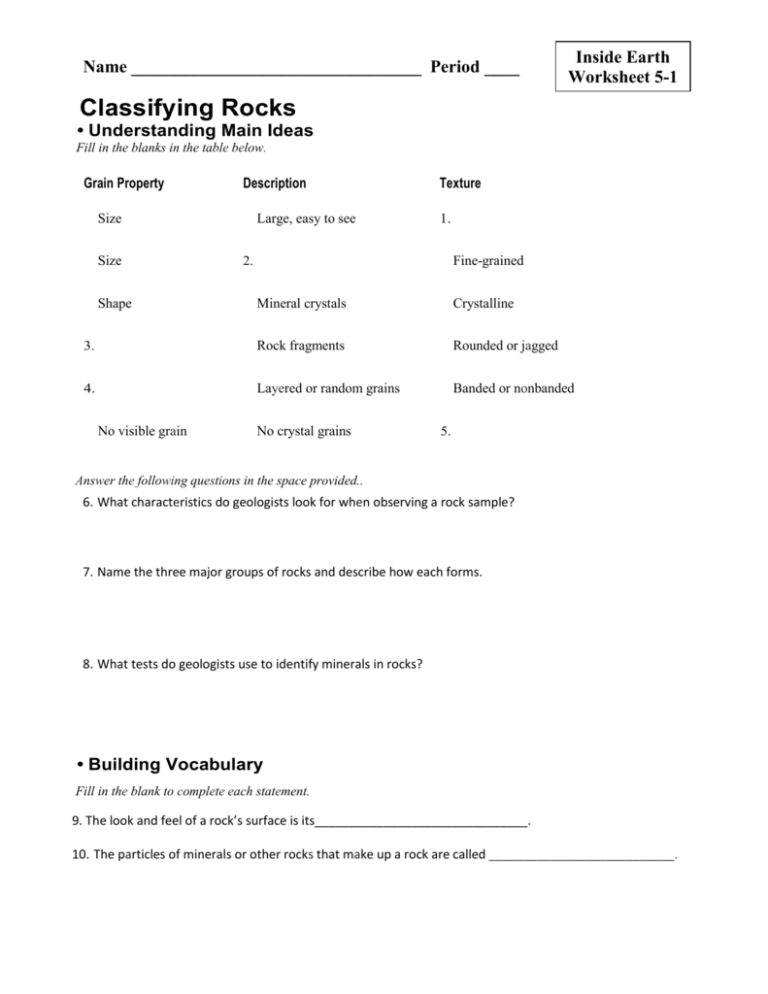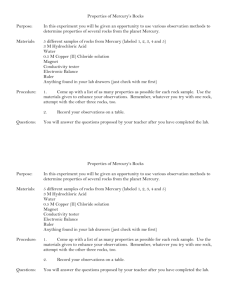Inside Earth WS 5
advertisement

Inside Earth Name _________________________________ Period ____ECTION 5-1 EW Worksheet 5-1 AE Classifying Rocks • Understanding Main Ideas Fill in the blanks in the table below. Grain Property Description Size Size Shape Large, easy to see Texture 1. Fine-grained 2. Mineral crystals Crystalline 3. Rock fragments Rounded or jagged 4. Layered or random grains Banded or nonbanded No visible grain No crystal grains 5. Answer the following questions in the space provided.. 6. What characteristics do geologists look for when observing a rock sample? 7. Name the three major groups of rocks and describe how each forms. 8. What tests do geologists use to identify minerals in rocks? • Building Vocabulary Fill in the blank to complete each statement. 9. The look and feel of a rock’s surface is its_______________________________. 10. The particles of minerals or other rocks that make up a rock are called ___________________________. ENRICH A Crust Full of Rocks The three major groups of rocks make up Earth's crust. But these groups of rocks are not found in equal amounts. The circle graph in the center below shows each group's percentage of the crust. The three circle graphs that surround the central one show the percentage of rocks that make up each group. You'll learn about many of these rocks as you read the rest of the chapter. Study the circle graphs below, and then answer the questions that follow. Answer the following questions on a separate sheet of paper. 1. Which rock group makes up most of Earth's crust, and what is its percentage? 2. How do rocks in that rock group form? 3. What kind of rocks make up most of the igneous rocks? From your knowledge of Earth's crust, where would you most likely find such rocks? 4. Which rock group makes up the least part of Earth's crust, and what is its percentage? 5. How do rocks in that rock group form? 6. What kind of rock makes up the greatest part of metamorphic rocks, and what is its percentage? 7. How do metamorphic rocks form?






